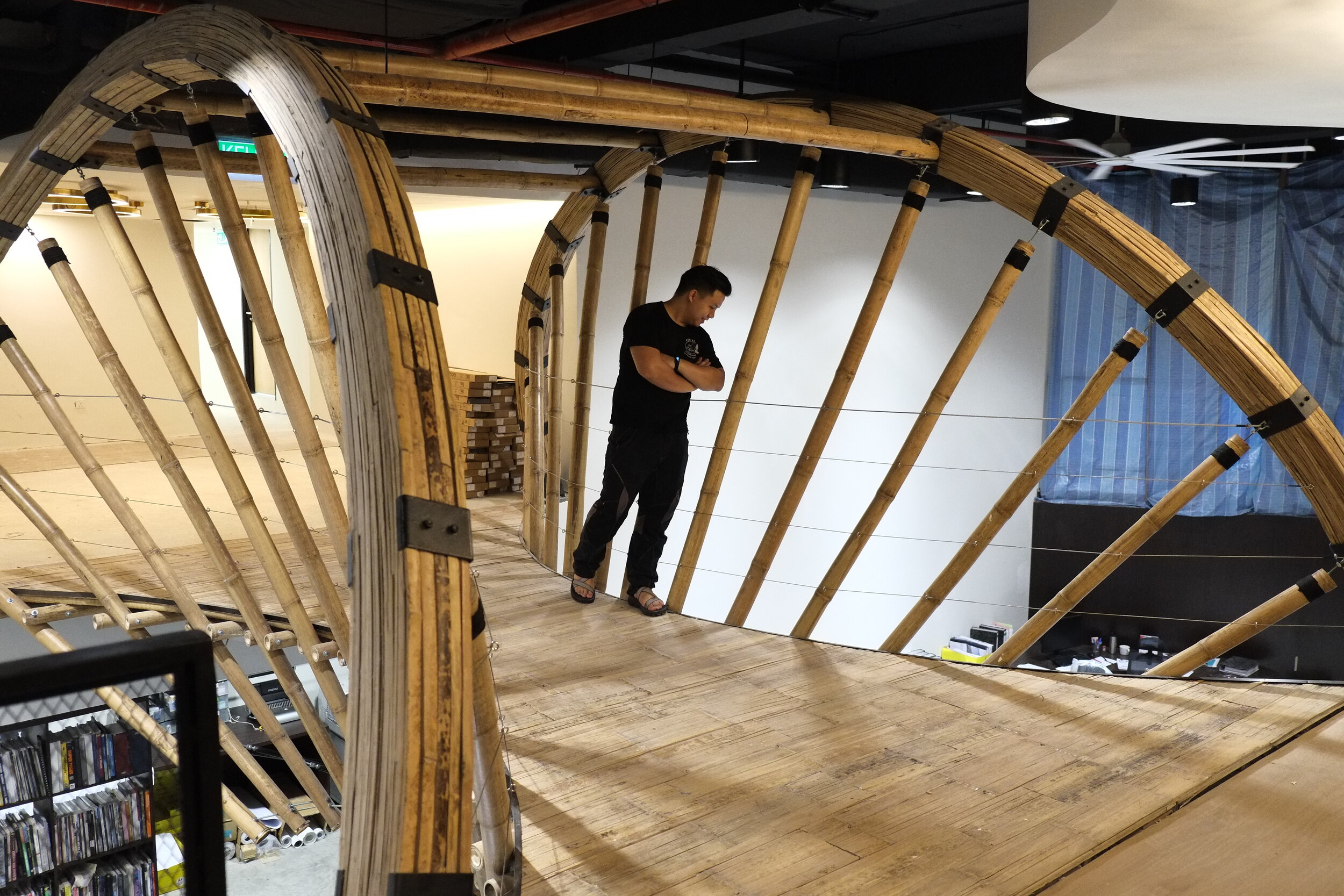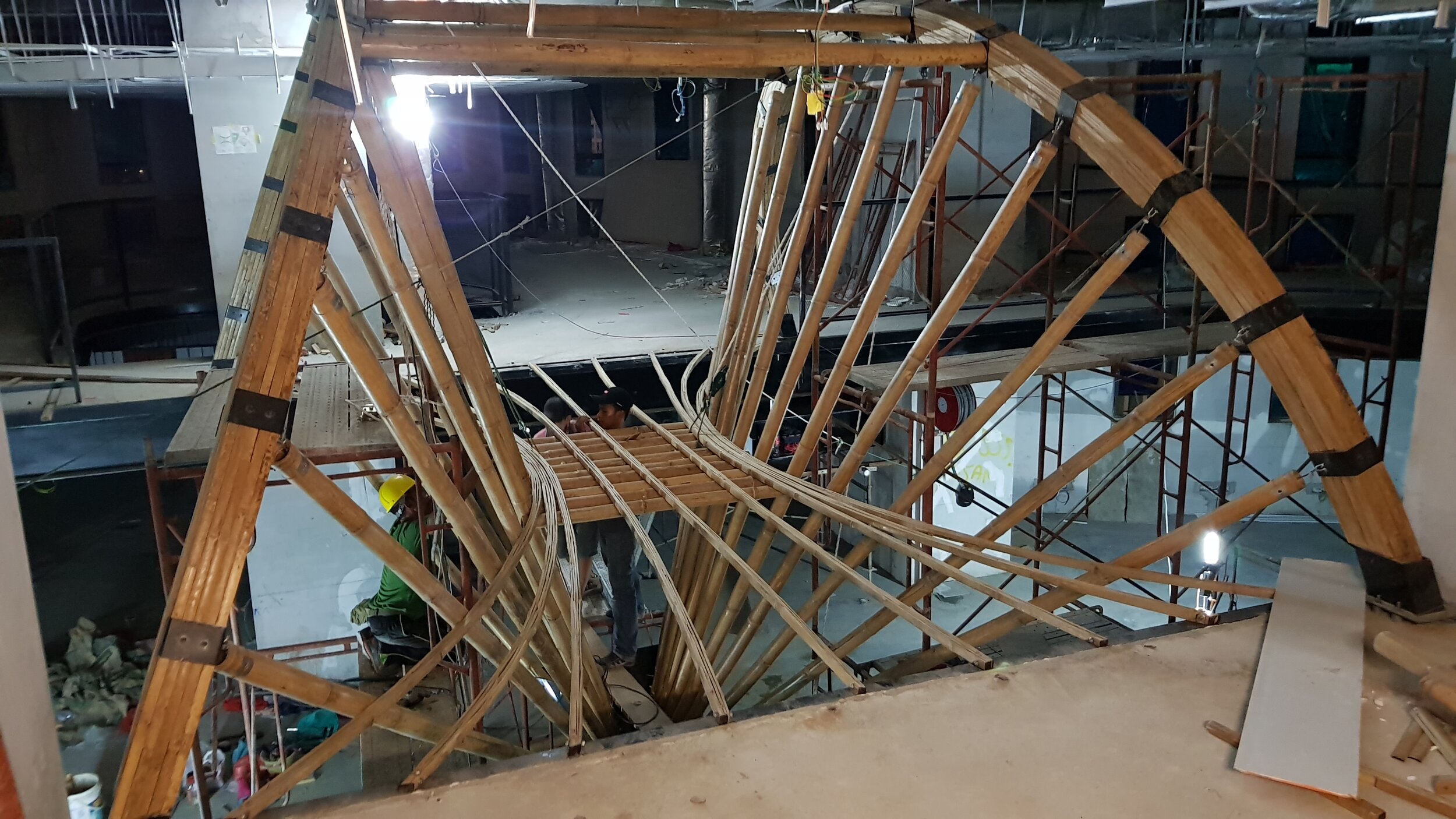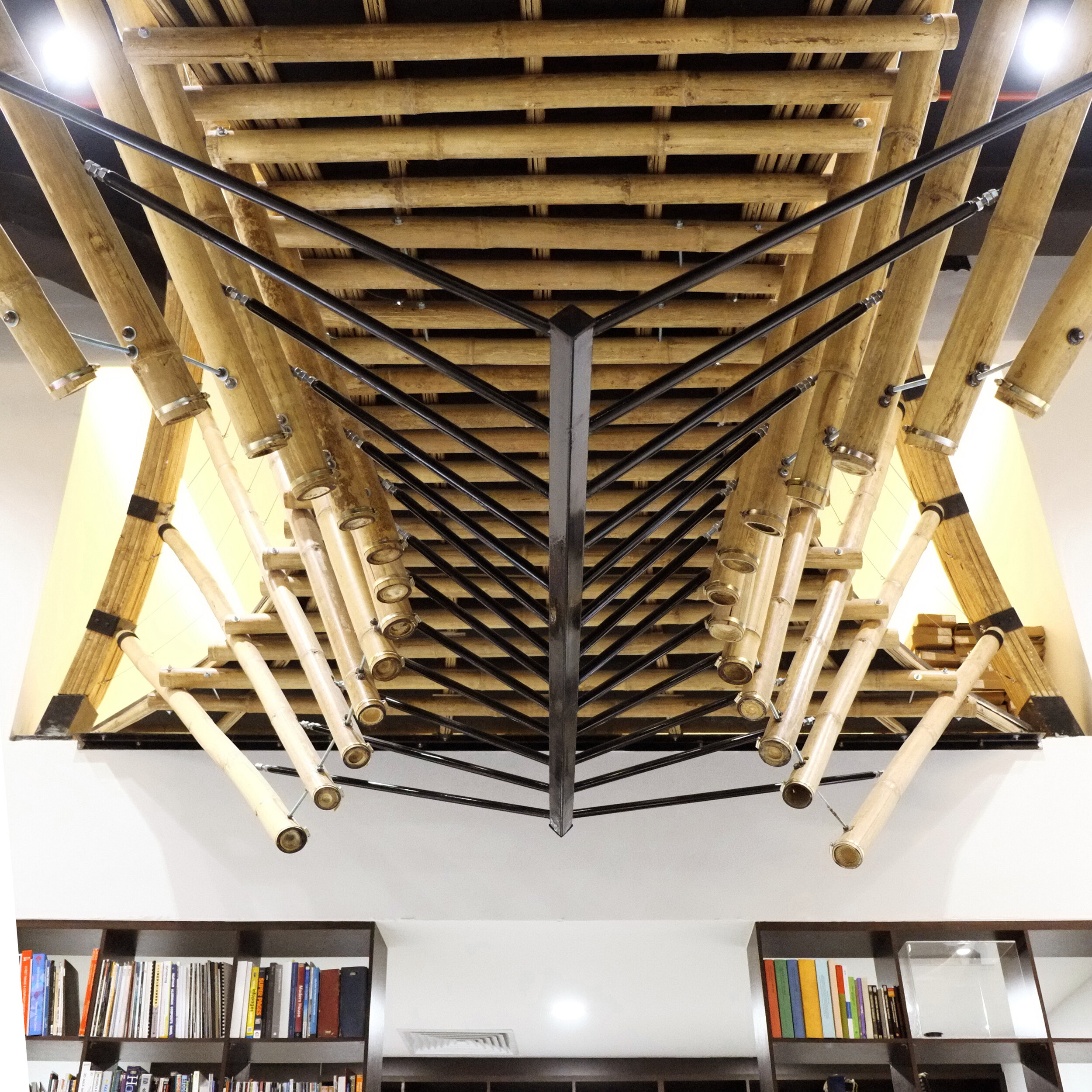Bamboo Bridge - SEAD Build
I connected with Lucas, Hua Jie and Bejay of SEAD at the Kuala Lumpur Architecture Festival 2019 where we were joint participants. We have maintained contact since then and have together with others looked at opportunities to promote bamboo through collaboration and projects.
The bamboo world in Malaysia is yet to flourish when we compare it with what has been emerging in the last 5 years with its ASEAN neighbours Indonesia, Thailand, Philippines and Vietnam. There are only a handful of dedicated bamboo proponents in Malaysia that are passionate and well tuned to authentically promote and progress bamboo and much has to be done to grow this sector to what it can be..
While this article concentrates on SEAD’s meticulous and technical approach for the Serenity Bridge in Ipoh, Perak, do hop on to their website and social media accounts (links at the end of the article) to find out more about them as they keep growing and refining their work in bamboo.
The completed Serenity Bridge.
1. Tell us about the company, how it was started and why it exists.
Our company SEAD specializes in bamboo because it is undoubtedly one of the most sustainable building materials out there. But, it’s more than just about bamboo. SEAD stands for Stewards of Environmentally-Aware Developments - which is basically a commitment to ourselves to focus on promoting sustainable practices in the built environment, and doing whatever we can to that end. We also believe that bamboo is so much more than a building material.
Under SEAD Plant, we are working on developing bamboo agroforestry practices to employ bamboo as a natural solution for the restoration of degraded lands in West Malaysia.
The SEAD Build team
2. Which regions do you work in?
So far, all our projects have been local (Malaysia). We do have one project planned for in France, but the COVID-19 situation has put that on hold for now. To the best of our efforts, we try to employ local resources. That’s why we set up our workshop in Perak, Malaysia, so we can be near to where we harvest our bamboo.
3. Tell us about the sourcing, harvesting and treatment/production methods that the company uses.
View of completed bridge connecting both sides of the office building
We engage several rural communities that harvest according to our guidelines; which include requirements for selective harvesting based on species, maturity, and quality, and also sustainable harvesting practices such as not harvesting the entire clump of bamboo so as to allow rapid regeneration of culms.
4. Describe the bridge and highlight its purpose and any special features
Building a bamboo bridge has been an aspiration for SEAD since the early days, so we were stoked when we were called up.
The project brief called for a bridge to link two separate sections of the client's newly-built office in Kuala Lumpur. The client, an architecture firm, requested for a combination of natural bamboo's aesthetic with innovative steel components.
Many of the steel components had to be custom-built and modified, including a special dynamic tension joinery developed to tighten its grip on the bamboo members as weight is loaded onto the bridge.
This project was also the first time we employed a technique we call Nail-Laminated Bamboo (NLB), which comprises of precision-milled strips of bamboo laminated together using nails in a specific sequence to form the rigid, even curved, composite members. We’ll talk more about those later.
5. What species of bamboo was used and how was it treated?
Gigantochloa Scortechinii (Malaysian local name - buluh semantan), Dendrocalamus Pendulus (Malaysian local name - buluh tali, buluh akar), and a hybridized species – all treated with a boron solution, in a heated system.
6. Describe the design and pre-construction process for the building – show digital models, scaled models, mechanical testing
Our 3D digital models tend to be quite finely detailed, as it is one way to mitigate surprises on site. With the 3D model, we were then able to work closely with our steel fabricators (also in Perak) to achieve a high standard of precision in our metal components.
We later put the metal joinery to the test and it withstood up to 445kgs of tensile force before the metal component gave way. At this point, the bamboo didn’t even show any visible signs of fatigue! Multiply that by the number of bamboo members supporting the bridge (hint: there were 26) and you get a rough idea of how strong the bridge is!
Of course, any design process is incomplete without a physical satay stick model.
7. Who constructed the building? Elaborate on the construction process
As a design & build company, most of our projects are designed and built in-house. This ensures a fluid process that maximizes our capabilities.
For this project, the first thing we prefabricated for this bridge were the 2 arches using the NLB technique. These needed to be rigid enough to hold the weight of the bridge and its users, while being nimble enough that it could be hand-carried through the narrow walkways of the office during construction.
Once on site, the limited space meant the arches had to be hoisted into position manually.
Thanks to the dynamic tension joinery, the tension members were a breeze to install and position.
The curving floor joists were also prefabricated using our NLB technique, and they offered plenty of stiffness despite of its slim profile.
The fishbone metal bracing underneath the bridge was designed to give the bridge a more organic aesthetic from below, while maintaining visual lightness from the sides.
In order to achieve the minimal appearance of the fishbone brace, a special T-joint was designed to be slotted and secured into the bamboo so that the joinery is not shown on the outer side. This live joinery also allows the bridge to stay structurally dynamic without putting too much stress on the bamboo’s inner wall.
Bamboo doesn’t have to stand alone. Where it is sensible, it synergizes well with modern materials like metal to strengthen the structure and enhance its already beautiful nature.
Some of our other past projects:
Tadom Hill Resort - Groove Lounge
Tadom Hill Resort - Groove Lounge
Tadom Hill Resort - Groove Lounge
Tadom Hill Resort - Groove Lounge
Jari - Jari Spa
Jari - Jari Spa
Email: sead.build@gmail.com
Website: www.seadbuild.com
Facebook: @sead.build.co https://www.facebook.com/sead.build.co
Instagram: @sead.build https://www.instagram.com/p/B4tV8JcJkyp/































